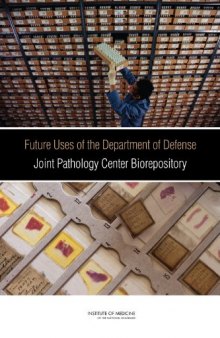 جزییات کتاب
جزییات کتاب
Founded during the Civil War as the Army Medical Museum, the Armed Forces Institute of Pathology (AFIP) amassed the world's largest collection of human pathologic specimens and was considered a premier consultation, education, and research facility by the end of the 20th century. Samples from the AFIP were instrumental in helping to solve public health mysteries, such as the sequence of the genome of the 1918 influenza virus that killed more than 40 million people worldwide. In 2005, the federal Base Realignment and Closure Commission recommended that the AFIP be closed, and its biorepository was transferred to the newly created Joint Pathology Center. During the transition, the Department of Defense asked the IOM to provide advice on operating the biorepository, managing its collection, and determining appropriate future use of specimens for consultation, education, and research. Future Uses of the Department of Defense Joint Pathology Center Biorepository, the IOM proposes a series of protocols, standards, safeguards, and guidelines that could help to ensure that this national treasure continues to be available to researchers in the years to come, while protecting the privacy of the people who provided the materials and maintaining the security of their personal information.



 دانلود کتاب
دانلود کتاب

 جزییات کتاب
جزییات کتاب





 این کتاب رو مطالعه کردید؟ نظر شما چیست؟
این کتاب رو مطالعه کردید؟ نظر شما چیست؟
